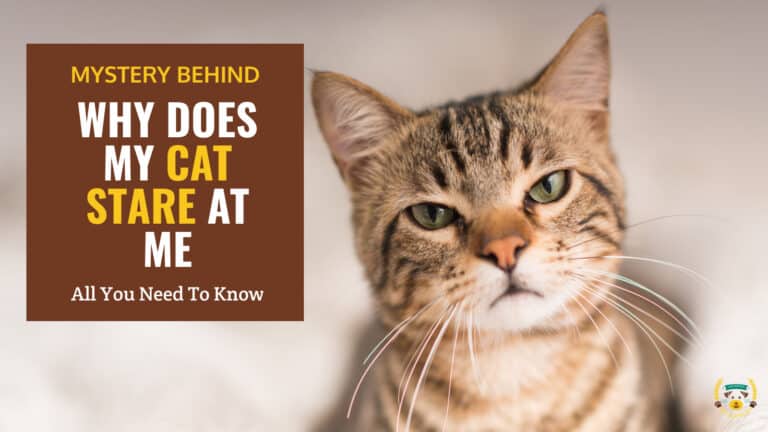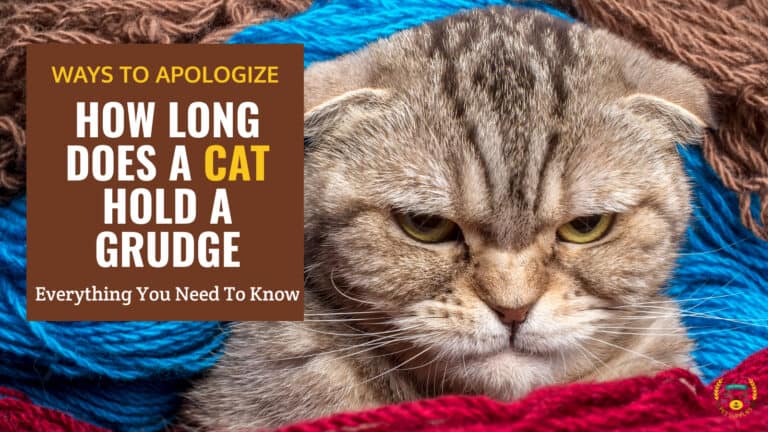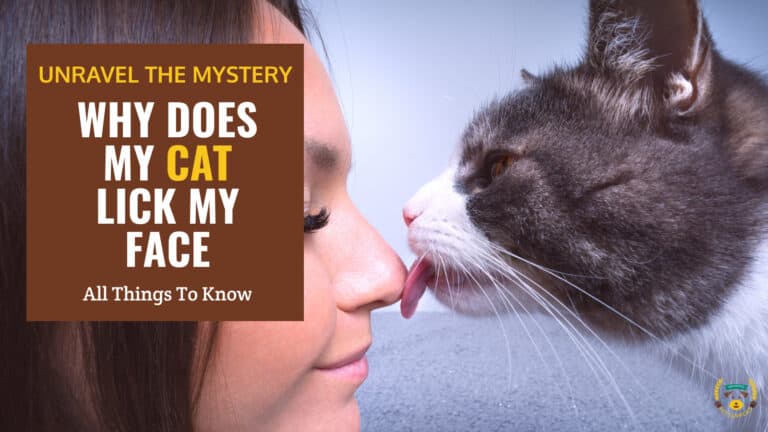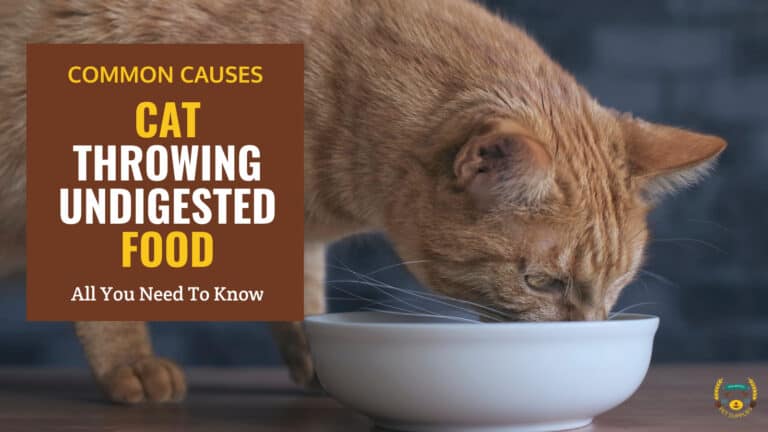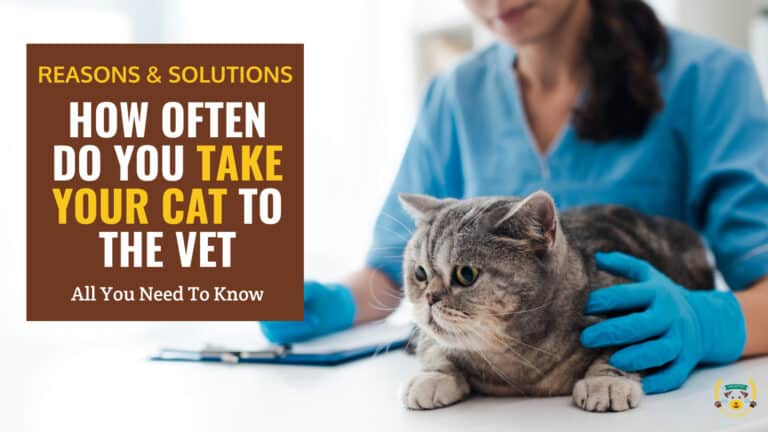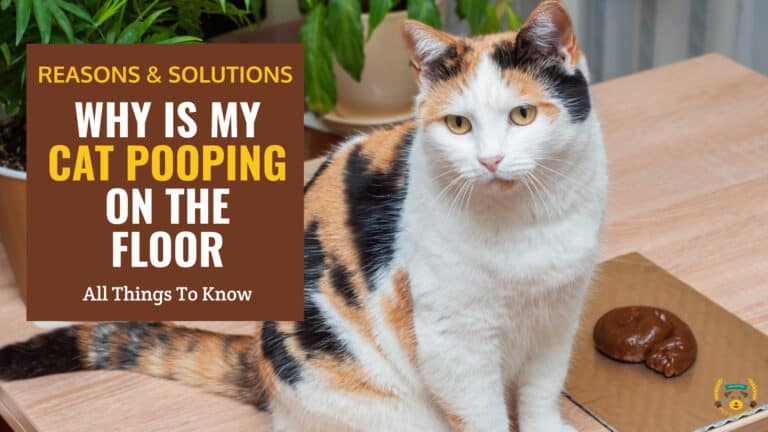How Long Can a Cat Go without Water?
Last updated: February 11, 2024
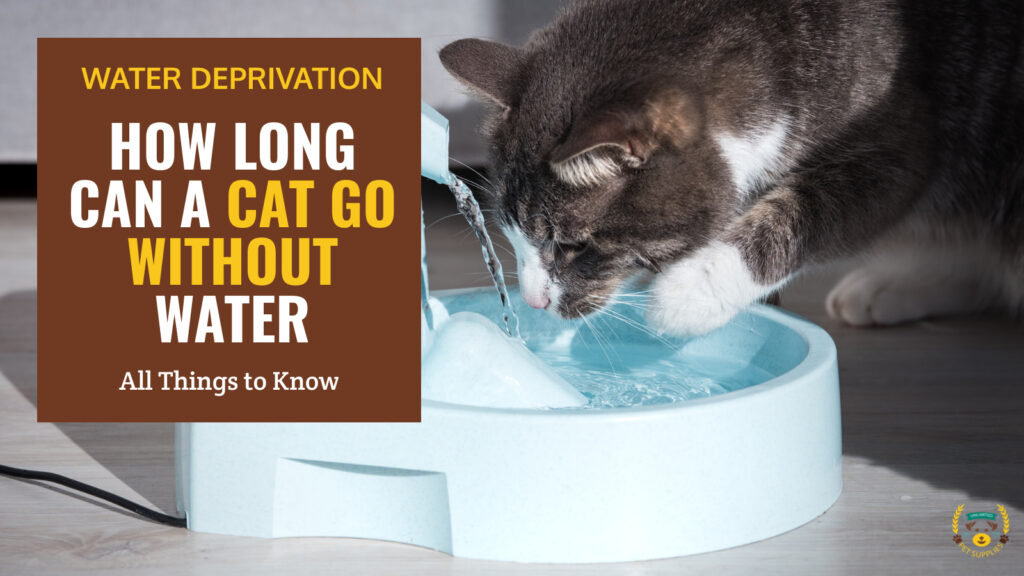
Summary
- Water makes up 60-70% of a cat's body weight and is vital for bodily functions.
- On average, healthy adult cats can only go 3-4 days maximum without any water before extreme danger.
- Kittens, seniors, sick cats have lower timeframes of 1-2 days without water.
- Temperature, activity level, underlying health issues all impact dehydration timeframe.
- Wet food, broths, fountains can help cats get moisture if water unavailable.
- Signs of dehydration include lethargy, sticky gums, constipation, vomiting. Requires prompt vet care.
- Prevent dehydration by providing fresh water daily, optimizing water bowls, using wet food, fountains.
- Monitor cats' hydration signs daily. Seek vet help if no water for 48+ hours or symptoms persist.
- With proper hydration and early treatment, cats can avoid the dangers of prolonged dehydration.
Water is an essential nutrient for cats, just as it is for humans and other animals. While we can survive for weeks without food, a lack of water can become life-threatening in just a few days for our feline companions. Understanding cats' hydration needs and being attentive to signs of dehydration is crucial for any cat owner.
This article will cover the basics of why water is so important for cats, factors that impact their hydration requirements, visible symptoms of dehydration to look out for, and the dangers of prolonged water deprivation.
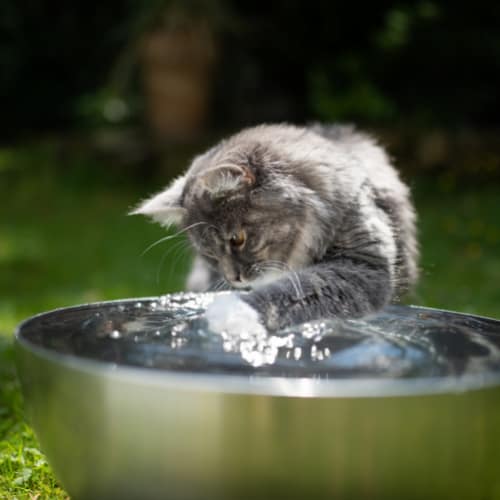
Equipped with this foundational knowledge, cat owners can better monitor their pet's health, prevent dehydration from occurring, and know when to seek veterinary assistance.
Importance of Hydration for Feline Health
Cats need adequate water intake to maintain bodily fluid levels and support all organ systems. Water makes up about 60-70% of an adult cat's body weight. It is essential for:
- Transporting nutrients and oxygen to cells
- Flushing waste from the body via urine
- Aiding digestion
- Cushioning joints and body tissues
- Regulating body temperature
When a cat does not take in enough water, these processes become compromised. Dehydration can quickly spiral into a life-threatening emergency for our petite feline companions.
The amount of water needed by each cat to stay healthy differs based on multiple factors such as age (young, adult, old), health, dirt (dry or wet food), and the environment (hot climate increases water needs). Understanding these individual differences allows you to provide each cat with customized access to water.
Dangers of Prolonged Dehydration
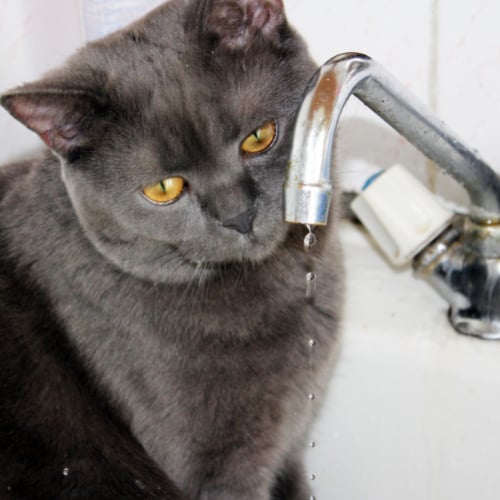
If a cat goes too long without adequate water intake, the results can be extremely dangerous or even fatal. Severe, prolonged dehydration can lead to:
- Kidney failure
- Seizures and neurological issues
- Impaired blood flow
- Digestive problems like constipation or vomiting
- Coma and death in extreme cases
Due to their small size, cats are prone to dehydrating faster than humans or large pets when water is withheld. Prevention and early intervention are key to keeping cats healthy and hydrated.
Providing easy access to clean, fresh water along with paying attention to hydration signs allows cat owners to meet their pets' needs. But how long can cats actually go without any water intake when necessary? We will explore this question in the following sections.
So, How Long Can a Healthy Cat Go Without Water?
While the exact timeframe varies based on circumstances, healthy adult cats can generally survive without any water intake for 3-4 days on average before becoming critically dehydrated. However, a number of factors impact just how long cats can go without water before risking organ damage and death.
3-4 Days as a General Rule of Thumb
Under ideal conditions, the average healthy cat can go without drinking for 3-4 days before dehydration becomes severe. This estimate assumes:
- The cat is an adult between 1-10 years old. Kittens and seniors cannot go as long.
- The cat has no underlying kidney, liver, or other health issues.
- Temperatures are mild, around 70°F/21°C. Heat stresses cats and increases water needs.
- The cat rests and does not exert itself, minimizing fluid loss.
- There is no vomiting or diarrhea that would cause further dehydration.
With those caveats, most sources estimate that 3-4 days without water is the general limit for cats before extreme danger sets in. But this can vary based on the factors below.
Factors That Impact The Timeframe
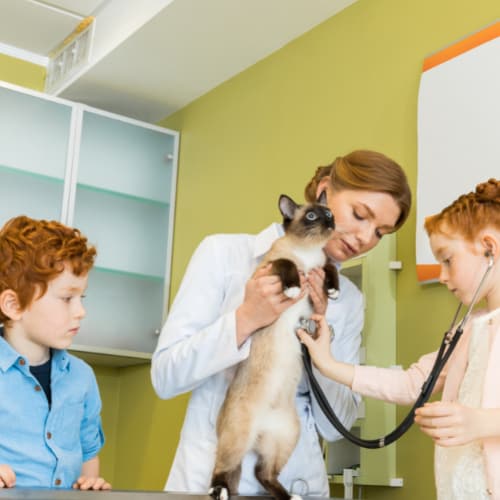
Several variables play a role in how long a cat can safely go without drinking any water:
- Age - Kittens and senior cats cannot go more than 1-2 days without water. Their bodies are less efficient at conserving fluids.
- Illness - Any sickness, especially involving vomiting or diarrhea, shortens time without water. Underlying kidney issues also limit the timeframe.
- Temperature - Hot weather or a fever severely impact hydration limits. Cats dehydrate faster at high temperatures.
- Activity level - The more active the cat is, the quicker it loses fluids and needs water replenishment.
- Buildup - Repeated bouts of borderline dehydration compound over time, shortening how long a cat can go without water.
Monitoring at-risk cats vigilantly and providing water proactively is crucial.
Access to Other Liquids
While not substitutes for fresh water, certain other fluid sources can slightly extend the time a cat can go without drinking:
- Canned wet food or free-fed kibble provides moisture via eating.
- Veterinarians can administer subcutaneous fluids under the skin.
- Dew drops on grass or leaves offer a trace amount of hydration if outdoors.
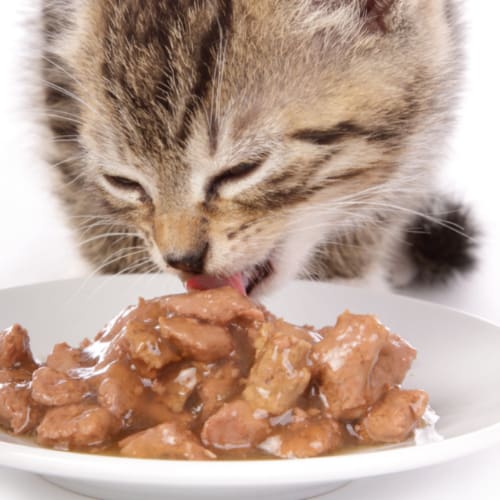
These measures provide a limited amount of fluid intake to prolong the timeframe up to another day or two. However, the effects are minimal and imperfect solutions compared to regular access to clean drinking water.
Check Also: How Often Should You Feed Your Cats?
Monitoring for Dehydration Signs
Cat owners should watch for early signs of dehydration daily, including:
- Dry, sticky gums
- Lethargy, weakness, or unsteadiness
- Skin that is slow to snap back when pinched
- Constipation
- Reduced or dark urine
- Sunken eyes in severe dehydration
- Loss of appetite or vomiting
Prompt veterinary care is essential if a cat is not able to keep down fluids or is exhibiting dehydration symptoms. Catching it early greatly improves the prognosis and makes treatment easier. Allowing a cat to become severely dehydrated can cause lasting organ damage or even death.
While capable of going roughly 3-4 days without water, cats should never be forced to go more than 24 hours without fresh drinking water. Providing constant access is vital to good health. We will discuss proper hydration best practices in the next chapter.
Providing Adequate Water for Cats
Cats should always have fresh, clean drinking water readily available. Here are some tips for encouraging proper feline hydration:
Water Bowl Tips
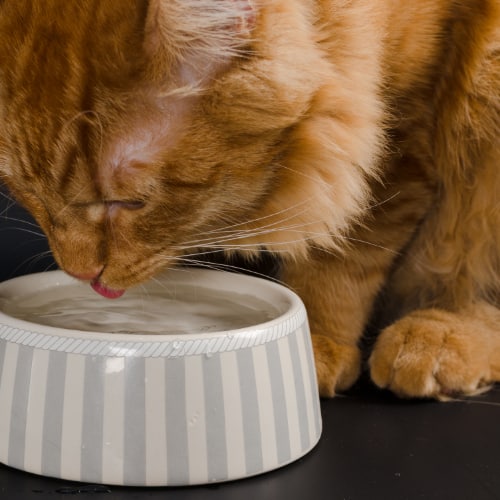
Optimizing your cat's water bowl setup makes drinking more enticing; try to do the following:
- Use wide, shallow bowls rather than narrow ones to prevent whisker stress.
- Place bowls away from food and litter boxes in quiet, easily accessed areas.
- Change the water daily to keep it fresh and appealing.
- Consider stainless steel or ceramic over plastic to prevent odors.
- Offer multiple water stations around your home.
- Consider a pet water fountain for running water.
Use Wet Food and Broths
Wet canned food or homemade broths increase fluid intake; follow these tips to ensure better hydration:
- Feed wet food or add water to the kibble to moisture the content.
- Make "kitty broths" by soaking dry food in warm water. Let the mix soak before serving.
- Ice cubes or frozen broths provide hydrating chilled treats (especially during hot Summer days).
- Avoid salty stocks that will cause further thirst.
Build or Purchase a Water Fountain
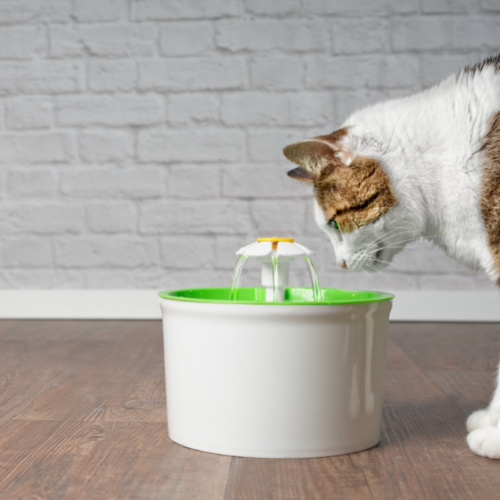
Pet drinking fountains entice picky drinkers, and cats often prefer moving water, as still water seems stale. The included water filters keep circulating water clean and great-tasting, and some options even feature pet-appealing designs and flow patterns.
These fountains are very affordable and available in different sizes. If you have one or two pets, a small option like Nereal's Stainless Steel Fountain will be enough; but if you have a large number, you can go with a larger model such as Kastty's Extra Large Pet Fountain. Just ensure the unit is cleaned frequently to prevent mold and odors.
Additional Tips for Hydration
Some other ideas for encouraging water intake include the following:
- Offering bottled drinking water, as some cats dislike tap water tastes.
- Growing cat grass for added opportunity to lick off fresh dew drops.
- Dripping or spraying water onto food as an added moisture source.
- Placing water bowls in sunny windows so cats can enjoy a warm drink.
With some creativity and patience, you can find methods to entice even finicky felines into staying well-hydrated. Preventing dehydration is always preferable to treating it.
When to Call the Vet About Dehydration?
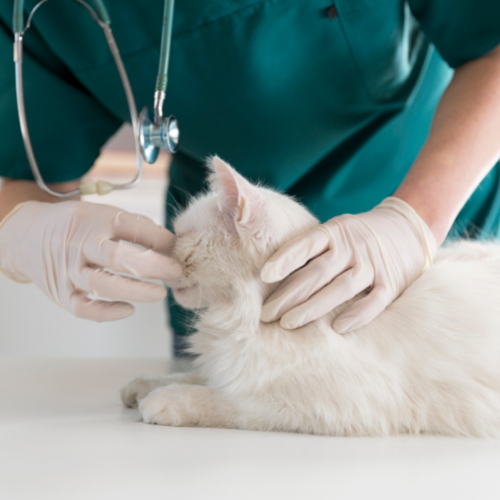
While mild dehydration can often be treated at home, there are times when contacting your veterinarian for guidance or urgent care is crucial. Here are some signs it’s time to seek medical support:
If the Cat Goes Over 48 Hours Without Water
If your cat has not had any water intake in over 48 hours and is exhibiting any symptoms of dehydration, promptly consult a vet. They can provide subcutaneous fluids under the skin for rehydration, intravenous fluids (if severely dehydrated) and/or diagnostics to check organ function and identify any related illnesses
Extreme dehydration can quickly lead to kidney failure, so veterinary treatment after 2+ days without water is imperative.
For Increased Risk Cats
For very young kittens, senior cats, and those with preexisting conditions, seek vet advice after just 24 hours without water intake. Kittens and cats with health issues like kidney disease cannot go as long safely without fluids.
If Symptoms Do Not Improve With Hydration
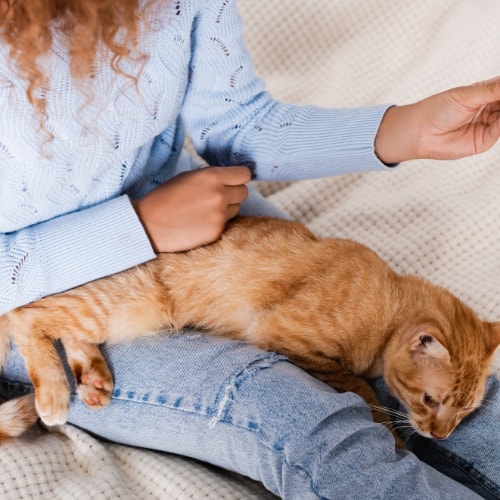
If you are providing supplemental water and food with high moisture content, but dehydration symptoms persist, consult your vet to rule out any underlying diseases contributing to dehydration. This could indicate:
- Metabolic or hormonal disorders like diabetes or hyperthyroidism
- Gastrointestinal obstruction or infection
- Kidney or liver failure
Preventing Repeated Dehydration in the Future
There are many things you can do to help avoid repeated dehydration episodes; please note that these are almost similar to things you do to ensure proper hydration, but they are even more important in case of repeated episodes, so pay special attention to them:
- Offer multiple fresh water sources around your home
- Switch to wet food or add more water to dry food
- Address any health issues, like kidney disease, that increase thirst and urination
- Closely monitor water intake and signs daily to catch problems early
With proactive care and early veterinary treatment (if needed), you can ensure your cat remains happy, healthy and hydrated for life.
If you have any concerns about your cat's health or hydration, or are unsure about how often to take them for checkups, consult with your veterinarian. They can provide personalized advice and guidance to ensure your furry friend stays healthy and happy.
Frequently Asked Questions
Below are answers to some frequently asked questions about cats and (de)hydration to help you have all the knowledge needed to tackle any issues your cat might have.
How much water does my cat need daily?
On average, cats need about 1 ounce of water per pound of body weight per day. So a 10-pound cat would need roughly 10 ounces of water daily. As already mentioned earlier, this can vary based on age, health, diet, and environment.
What temperature of water do cats prefer?
Cats prefer water that is cool but not too cold - around room temperature is ideal. Avoid serving water straight from the tap, as this may be too chilly and unappealing.
Where is the best place to put my cat's water bowl?
Place water bowls in easily accessed areas around your home, but not right next to food bowls or litter boxes. Quiet corners that your cat frequents are good spots. Having multiple stations is advisable.
Is tap water safe for cats to drink?
Tap water is generally safe for cats to consume in most modern municipalities. But filtered water is better for taste and reducing metal exposure. Use tap water fresh each day.
How can I get my cat to drink more water?
Try different water bowl shapes, pet fountains, adding water to food, offering bottled water, making broths, giving chilled treats, and growing cat grass for more ways to boost hydration. Finding the right enticements for your individual cat is key.
Final Thoughts
Water is an essential part of cats' health and well-being. While able to survive about 3-4 days without it under normal circumstances, allowing felines to go even 24 hours without fresh drinking water risks dehydration and organ damage. By understanding cats' hydration needs, signs of dehydration, and ways to encourage adequate intake, you can promote optimal health for your beloved furry friend(s).
If you have any questions or comments, feel free to contact us via email or in the comments section below.
Thanks for reading!

